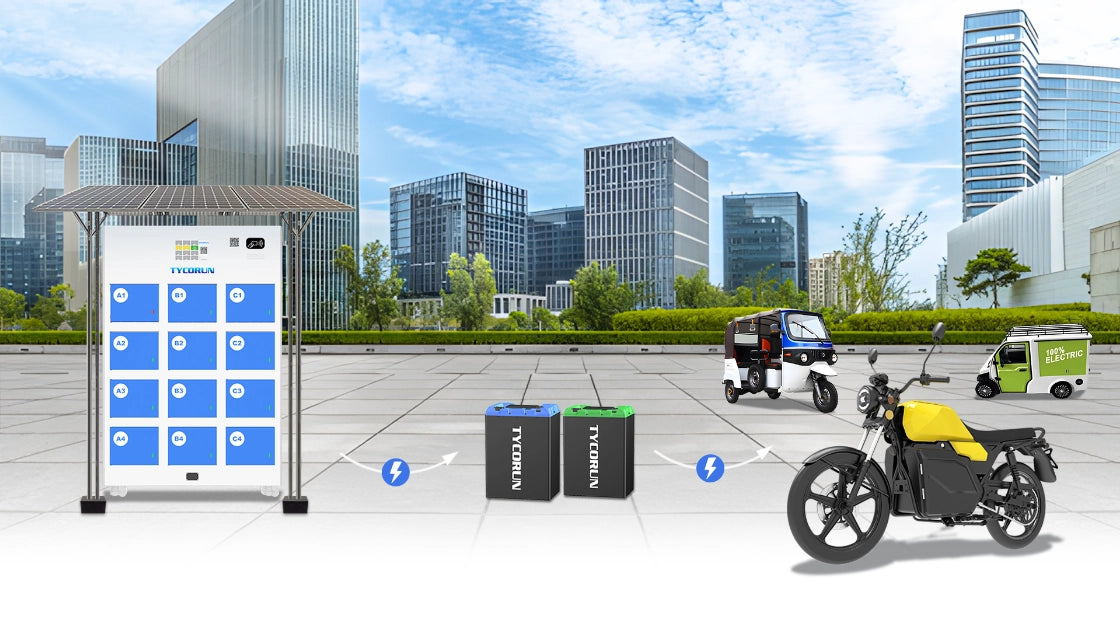Understanding how heavy is a car battery is essential for vehicle performance, efficiency, and safety. This article explains that battery weight varies widely across lead-acid, lithium, hybrid, and EV types, explores its impact on range, handling, charging, and lifecycle, and highlights future trends like solid-state and lightweight modular designs. By examining safety tips and practical ways to determine battery weight, readers gain a complete guide to managing battery choices effectively.

Main content:
- How Heavy Is a Car Battery?
- Why Are EV Batteries So Heavy? Understanding How Heavy Is a Car Battery
- How Battery Weight Affects Vehicle Performance
- Does Battery Weight Affect Charging?
- How to Determine How Heavy Is a Car Battery
- Are Heavier Batteries More Efficient? How Heavy Is a Car Battery Matters
- Safety and Handling Recommendations (By Battery Type) – How Heavy Is a Car Battery
- Future Trends: Will Batteries Get Lighter? How Heavy Is a Car Battery in Future EVs
- Conclusion
-
FAQs
- Does a heavier car battery mean better performance?
- Is a fully charged battery heavier than a dead battery?
- Is higher car battery capacity better or worse?
- What is the maximum wattage output of a typical 12V car battery?
- How much do the batteries weigh in a Tesla Model Y?
- How much does today’s LFP battery weigh per kWh?
How Heavy Is a Car Battery?
How Heavy Is a Car Battery in Traditional Lead-Acid Starters
In conventional fuel cars, the most common battery is the lead-acid starter battery, usually weighing 30–50 lbs (13.6–22.7 kg). When discussing how heavy is a car battery in pounds, this type is a typical example. Its weight mainly depends on the battery BCI group number (size standard), cold cranking amps (CCA), and the difference between AGM and Flooded designs. Higher CCA means thicker internal lead plates, resulting in heavier batteries. AGM batteries are slightly heavier but offers better durability and performance.
How Heavy Is a Car Battery in Lightweight Performance Models
Lightweight car batteries often use lithium battery technology, weighing only 10–20 lbs (4.5–9 kg), almost half or one-third of traditional lead-acid batteries. They are common in race cars, modified cars, or high-performance models, offering the key advantage of reducing overall vehicle weight, thereby improving acceleration, braking, and cornering. For enthusiasts seeking ultimate handling, these batteries provide the optimal weight solution.
How Heavy Is a Car Battery in Hybrid Vehicles
Hybrid vehicles (HEVs) use batteries significantly heavier than standard starters, usually 100–300 lbs (45–136 kg). These batteries use NiMH or lithium-ion chemistries, providing enough power for electric driving while keeping volume and weight manageable. The design balances range, lifespan, and mass, making them a representative example of how heavy is a car battery in kg.
How Heavy Is a Car Battery in EVs: The Heaviest Power Source
Electric vehicle (EV) batteries are the heaviest type in today’s automotive market, ranging from 500–1,500+ lbs (227–680+ kg). Examples include:
Tesla Model 3: ≈ 480 kg
Chevy Bolt: ≈ 431 kg
Ford F-150 Lightning: ≈ 816 kg
GMC Hummer EV: up to 1,315 kg
Why Are EV Batteries So Heavy? Understanding How Heavy Is a Car Battery

Bigger Capacity Means More Weight
To drive farther, EVs need more energy, which means more cells. Like a portable power bank: small capacity is light, large capacity is heavy. Battery capacity is measured in kWh, and weight increases proportionally. Different chemistries have different specific weights:
NMC: 5.4–9.4 kg/kWh
LFP: heavier but safer and cheaper
This explains why high-range models’ battery packs can make up one-third or more of total vehicle weight. To go farther, heavier batteries are unavoidable, making how heavy is a car battery a key discussion point for EVs.
Cell Types Affect Battery Weight
Battery cells are like pages in a book. Different sizes, materials, and packaging methods directly impact final weight. Common cell types:
Cylindrical cells (e.g., Tesla): robust but slightly heavier
Prismatic cells: higher space efficiency, balanced weight
Pouch cells: lightest, need extra support structures
Cell arrangement, energy density, and cooling needs also vary, affecting the final pack weight—like a book’s binding changing its thickness and weight.
Pack Structures Add 25–40% Extra Weight
A battery pack is more than stacked cells. Safety, cooling, and durability require many added systems, including:
Cooling systems (liquid pipes, heat plates)
Metal protective casing (impact resistance)
BMS (monitoring voltage, temperature, and safety)
These extra components are significant, often 25–40% of total pack weight. For example, in a 600 kg pack, 150–240 kg may be just “protection and performance” parts. Reducing weight is impossible when safety is prioritized, so overall weight naturally rises.
How Battery Weight Affects Vehicle Performance

Impact on Range and Efficiency
When discussing how heavy is a car battery, many people wonder if a heavier battery means shorter range. In reality, a heavier battery does not necessarily reduce range, because it usually indicates higher capacity. The key is balancing energy density (Wh/kg) and total weight. In other words, a heavy battery with high energy density can still provide long range without drastically lowering vehicle efficiency. This explains why how heavy is a car battery in kg can vary widely across models, yet range performance differs.
Impact on Handling Performance
Adding battery weight increases the power needed for acceleration and slightly extends braking distance. However, modern EV batteries are typically placed at the vehicle’s bottom, effectively lowering the center of gravity and enhancing stability. This design allows EVs to handle corners more confidently than comparable conventional vehicles. In short, while excessive battery weight can affect acceleration and braking, a well-placed battery can actually improve handling.
Impact on Vehicle Safety
Heavier batteries can absorb more energy during collisions, but they also require stronger vehicle structures. Battery pack placement directly affects crash safety design, such as reinforced underbody and side protection. With proper structural design, heavier batteries are not a safety risk and can even improve overall crash safety.
Does Battery Weight Affect Charging?

Impact on Charging Time
Higher capacity batteries are heavier and store more energy, so charging takes longer. This is a direct example of how heavy is a car battery affecting daily use. For instance, a heavy battery may take several hours to fully charge at home using standard AC charging, whereas a lighter battery charges faster.
Impact on Charging Station Power
A heavy battery not only increases charging time but also requires higher power from the charging station. Large batteries often need 150–350 kW DC fast charging, putting greater demand on station infrastructure. Therefore, how heavy is a car battery affects not just the vehicle, but also the design and efficiency of charging networks.
High-Voltage Systems Mitigate Weight Effects
Some high-end vehicles use 800V systems, such as Porsche and Hyundai, which reduce wiring weight while enabling faster charging. This means even heavy batteries can minimize energy loss and charging stress, reducing the impact of how heavy is a car battery and improving user experience.
How to Determine How Heavy Is a Car Battery
Check the Battery Label
The easiest way to know how heavy is a car battery is to check the battery label. Most modern lithium and lightweight batteries indicate weight on the label. Simply open the battery compartment or check the side markings to see how heavy is a car battery in kg or pounds.
Estimate Using BCI Group Number
The BCI (Battery Council International) group number identifies battery size and type. While it doesn’t give the exact weight, it provides a typical weight range. Using this method, even without a label, you can roughly estimate how heavy is a car battery in pounds, which is useful for selection or replacement.
Consult Manufacturer Specifications
If the battery label is unclear or precise data is needed, check the manufacturer’s datasheet. Both battery and vehicle makers usually provide EV or HEV battery weight information. This is a reliable way to know how heavy is a car battery, especially for accurate maintenance or planning.
Are Heavier Batteries More Efficient? How Heavy Is a Car Battery Matters
Heavy ≠ More Efficient
Many people think a heavier battery automatically provides higher efficiency, but in reality, battery efficiency mainly depends on energy per unit weight—i.e., energy density (Wh/kg). For example, lead-acid batteries are heavy but low in energy density, while lithium batteries are light and efficient. Therefore, battery weight alone does not indicate efficiency; the key factor is energy density.
Why Heavy Batteries Are Common in EVs
EVs require long range, so they are usually equipped with high-capacity batteries. Higher capacity increases weight, which is why many EV batteries are relatively heavy. Even though weight increases, range improves—this is a classic example of balancing how heavy is a car battery with vehicle performance.
Impact on Environment and Lifecycle
Heavier batteries cost more to produce and use more materials, making battery recycling and disposal more challenging. This means that in terms of environmental impact and lifecycle management, heavier batteries require extra consideration. When choosing a battery, it’s important to consider not only how heavy is a car battery but also cost and ecological factors.
Future Trend: Solid-State Batteries
To overcome the limitations of traditional heavy batteries, solid-state batteries are emerging as the future trend. These batteries are lighter, safer, and have higher energy density, significantly reducing the impact of weight on range and handling. Future EVs could achieve long range with lighter and more efficient battery systems.
Safety and Handling Recommendations (By Battery Type) – How Heavy Is a Car Battery

Lead-Acid Battery Safety
Lead-acid batteries typically weigh 30–50 lbs. When lifting, bend your knees instead of your back to avoid injury. Also, prevent tipping to avoid acid spills. Knowing proper handling ensures safety when managing how heavy is a car battery during daily maintenance.
EV Battery Safety
EV batteries often exceed 500 lbs. Never attempt to disassemble or move them yourself. Use professional lifting equipment and safety gear, as high-voltage systems are dangerous. In this case, how heavy is a car battery emphasizes professional handling and safety precautions.
Future Trends: Will Batteries Get Lighter? How Heavy Is a Car Battery in Future EVs
With rapid advances in solid-state battery technology, future batteries will be significantly lighter. Solid electrolytes replace traditional liquid electrolytes, improving safety and energy density, allowing more energy per unit weight. This means that even with the same total capacity, batteries will weigh less than current lithium-ion types.
New materials also play a key role. For instance, silicon anodes can replace graphite to boost energy density, while sodium-ion batteries offer cost and material advantages and enable lighter designs. These advances reduce the limiting effects of how heavy is a car battery on range and performance.
Beyond cell materials, lightweight battery pack designs are progressing. Modular battery packs optimize cell layout, reduce redundant structures, and cut support weight while improving thermal management and maintenance convenience. This not only lowers the actual load of the car battery but also improves vehicle center of gravity and handling. Combined with high-energy-density cells, future EVs can achieve long range with lighter battery systems.
Integrated vehicle structures (CTC, CTB) are also becoming more common. By embedding batteries directly into the floor or chassis, vehicles reduce redundant battery compartments and support structures. Even if battery capacity increases, overall vehicle weight rises less. In other words, future how heavy is a car battery will no longer be just a weight metric; it integrates with vehicle design to improve range, safety, handling, and efficiency.
Conclusion
How heavy is a car battery influences range, handling, safety, and charging requirements. While heavier batteries often provide higher capacity, efficiency depends on energy density. Future trends in solid-state technology, lightweight materials, and integrated vehicle designs promise lighter, safer, and more efficient batteries. Understanding these factors helps drivers and EV enthusiasts make informed choices for performance and sustainability.
FAQs
1. Does a heavier car battery mean better performance?
Not necessarily. While a heavier battery can indicate higher capacity, performance depends on energy density and efficiency. When evaluating how heavy is a car battery, consider that heavier doesn’t always mean better. How heavy is a car battery impacts range, but energy density matters most.
2. Is a fully charged battery heavier than a dead battery?
The weight difference is minimal. Charging does not significantly change mass, so how heavy is a car battery stays virtually the same whether full or empty.
3. Is higher car battery capacity better or worse?
Higher capacity usually improves range but increases how heavy is a car battery. How heavy is a car battery affects vehicle handling and charging time. The trade-off must be balanced for optimal EV performance.
4. What is the maximum wattage output of a typical 12V car battery?
A standard 12V lead-acid battery delivers around 400–800 W continuously, depending on size. How heavy is a car battery influences the plate thickness and current capacity. Heavier batteries usually handle higher output, showing the link between how heavy is a car battery and electrical performance.
5. How much do the batteries weigh in a Tesla Model Y?
The Model Y’s battery pack weighs roughly 480–500 kg.
6. How much does today’s LFP battery weigh per kWh?
LFP batteries weigh around 6–7 kg per kWh, heavier than NMC types but safer and cheaper. When assessing how heavy is a car battery, this ratio is crucial for energy density calculations.















